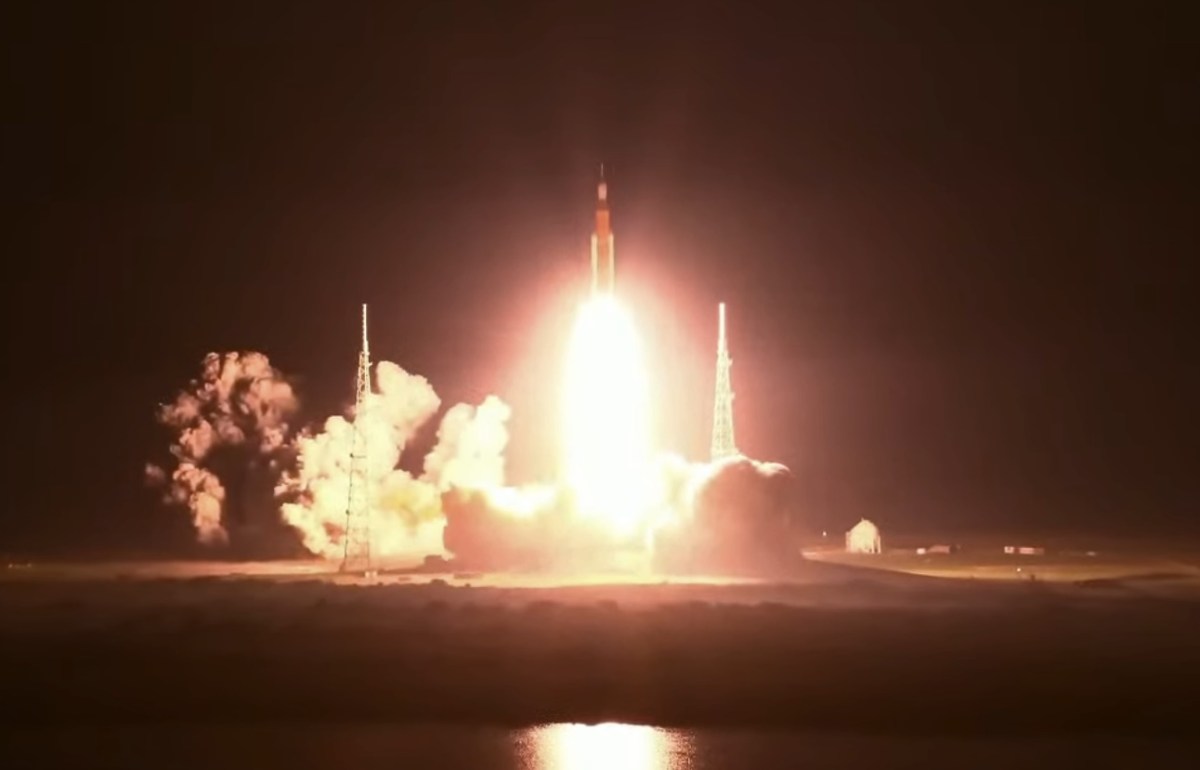Tech
The new generation of heavy lift rockets is rising to challenge SpaceX | TechCrunch

As the global appetite for orbital launches continues to grow, the competition among new and old space companies to build bigger and better launch vehicles is firing up.
It can be hard to keep up with this fast-paced yet incredibly complex and highly regulated industry — but everything you need to stay up to date is right here, with links to deeper coverage.
As a bit of background, it likely won’t surprise you to hear that SpaceX is the undisputed leader in launch, conducting a record 96 launches last year alone. But its supremacy has not cowed a growing number of competitors, who say they can bring much-needed supply and competitive pressure to the market, something that benefits the industry at large.
We’ve surveyed the current medium-, heavy- and super-heavy lift rocket landscape, from vehicles that are currently operational to those rockets yet to fly. We decided to exclude smaller launchers in development – like Stoke Space’s Nova and ABL Space’s RS1 – but even so, this is a fairly broad view. Some of the rockets we discuss below may not compete directly with each other and will vary widely in price. But any one of them coming online would likely mean a shake-up to their vehicle class: Relativity’s Terran R could destabilize Falcon 9’s dominance; New Glenn and Starship could unlock regular travel to the moon and beyond.
If even one succeeds, which is all but a certainty, it will change everything.
Before we begin, some definitions: medium-lift generally means a payload capacity of 2,000-20,000 kilograms (4,400-44,000 pounds) to low Earth orbit; heavy-lift, 20,000-50,000 kilograms (44,000 pounds-110,000 pounds); and super-heavy, which can haul over 50,000 kilograms.
Here are the ones currently flying:
And those yet to achieve orbit:
Currently operational heavy-lift rockets
Newcomers will be facing stiff competition from the get-go, especially in the heavy-lift category. So far this year, we’ve already seen the debut of ULA’s Vulcan Centaur and Arianespace’s Ariane 6, and there could be even more before the year is out.
Vulcan Centaur
- Company: ULA
- Payload capacity: 10,800-27,200 kg depending on the variant
- First launch: January 8, 2024
Vulcan Centaur is arguably United Launch Alliance’s most competitive rocket to date. Cheaper than its predecessor Atlas and Delta IV Heavy predecessors, Vulcan can also be configured in different ways to accommodate different mission profiles. But there are still questions on whether ULA, a Lockheed-Boeing joint venture, will be able to compete on price in the long-term.
Vulcan has some interesting architecture going for it: it can be configured in four standard ways, to accomodate a massive range of payloads to orbits ranging from geosynchronous to low Earth orbit. The rocket took off for the first time in January 2024 after several delays, in part due to issues with their BE-4 rocket engine supplier, Jeff Bezos’ Blue Origin. ULA has one more launch to go before it receives its certification from the U.S. Department of Defense. At that point, the company can start fulfilling a 26-launch backlog for the Space Force. That second certification launch is scheduled for around September.
Ariane 6
- Company: European Space Agency/ArianeGroup
- Payload capacity: 10,300-21,600 kg depending on the variant
- First launch: July 9, 2024
Europe is pinning its launch hopes on Ariane 6, which, although much delayed, finally made its inaugural flight earlier this summer. European officials are hoping that the new heavy-lift rocket will fill the wide launch capability gap on the continent, which has seen some of its critical missions go to SpaceX, for lack of a native launch provider.
The rocket was developed by ArianeGroup, a joint venture between Safran and Airbus, and overseen by the primary contractor the European Space Agency. Ariane 6’s first flight didn’t go entirely to plan – there was an anomaly with the upper stage’s engine on orbit which meant the final two onboard payloads were not deployed – but ESA Director General Josef Aschbacher confirmed that the agency was going to push ahead with a second flight by the end of the year.
Space Launch System
- Company: NASA/Boeing and L3 Harris
- Payload capacity: 27,000 kg to LEO
- First launch: November 16, 2022
NASA’s Space Launch System is really really big, and really really expensive. The towering, 321-foot-tall rocket has cost $23.8 billion from its inception in 2011 through to its first flight at the end of 2022, The Planetary Society estimated. Those costs will continue to mount: after its maiden launch in November 2022, NASA aims to launch SLS a second time next year. But because the rocket is fully expendable, every component has been built from scratch. SLS’s long-term future remains unclear, especially given the rise of reusability, and use cases are basically non-existent beyond its launches for NASA’s Artemis program.
Falcon Heavy
- Company: SpaceX
- Payload capacity: 63,800 kg to LEO
- First launch: February 6, 2018
Falcon Heavy has flown a total of ten times since its maiden launch in 2018. That launch captured a lot of attention, mostly because SpaceX CEO Elon Musk decided the payload should be a red Tesla roadster (complete with a dummy astronaut in the driver’s seat). If the rocket looks similar to Falcon 9, that’s because it’s essentially the same rocket with two additional first stage boosters strapped to the bottom. The rocket has been used to launch heavy satellites to geostationary orbits, large classified payloads for the DOD, and scientific instruments like the Psyche asteroid orbiter.
Falcon Heavy’s major advantage is power: it’s essentially a Falcon 9 but with three core boosters strapped together. That means triple the number of engines – and triple the thrust.
Preparing for launch

The rocket race is far from decided. Take a look at the next generation of launch vehicles that will make their debut over the next few years.
Starship
- Company: SpaceX
- Payload capacity: 150,000 kg to LEO
- Launch date: TBD
Starship is undoubtedly the most well-known rocket in the cohort, thanks in part to the company’s fast development cycle and relentlessly publicized launch test campaign — which has made enormous progress since the first orbital test launch in April 2023.
Each launch has gone progressively further than the one before, and the fourth saw the 400-foot-tall vehicle embark on a suborbital trajectory with both the booster and the first stage splashing down in the ocean.
For the fifth flight, which could happen as soon as late August or early September, it appears that SpaceX is aiming to return the booster to the South Texas launch site and catching it with massive ‘chopstick’ arms on the massive Mechazilla launch tower.
Much is riding on Starship’s success: NASA wants to use the rocket to return humans to the moon, as part of its Artemis campaign, and has paid billions to assist with the rocket development. It would also bring the company one step further to CEO Elon Musk’s ultimate vision: “expanding the light of consciousness” through the solar system, starting with a colony on Mars.
New Glenn
- Company: Blue Origin
- Payload Capacity: 45,000 kg to LEO
- Launch date: September
One of the most hotly anticipated launch vehicle debuts coming up is Blue Origin’s New Glenn, a 322-feet tall rocket that would be the company’s first orbital rocket if next month’s launch goes to plan. (New Shepard, its operational space tourism rocket, only flies to suborbital altitudes.)
While SpaceX and Blue Origin have much in common — apart from being backed by billionaire founders — SpaceX has vastly outpaced Blue in nearly every category. According to recent reporting, Blue’s new CEO, former Amazon exec David Limp, is looking to seriously change that. That change arguably begins with New Glenn, so there’s a lot riding on this first launch – not least because it will be carrying two Rocket Lab-made spacecraft to the Red Planet under a massive NASA contract.
Once it’s operational, the rocket will have around the same payload capacity as SpaceX’s Falcon Heavy, which means it will be a serious competitor for critical national security and government missions. No doubt Blue will also be throwing its hat in the ring for large lunar landers, space station modules, and other tech.
Terran R
- Company: Relativity Space
- Payload Capacity: 23,500 kg to LEO (expendable)
- Launch date: 2026
Relativity Space first gained notoriety in 2015 when it emerged with an ambitious goal to build rockets faster and more cheaply by leveraging 3D printing technology. The company’s small rocket Terran 1 was 85% 3D printed by mass. That rocket was meant to be Relativity’s first to g to market, but after a single launch that failed to reach orbit in March 2023, the company decided to make a hard pivot and retire that rocket entirely.
Instead, it’s gone all-in on the larger Terran R. The 270-foot-tall rocket will be launching from Launch Complex 16 at Florida’s Cape Canaveral Space Force Base starting in 2026. The company has reportedly signed over $1.8 billion across nine customer contracts for the rocket.
Neutron
- Company: Rocket Lab
- Payload Capacity: 13,000 kg to LEO
- Launch date: 2025
Neutron is Rocket Lab’s highly-anticipated second rocket, joining the company’s successful small Electron rocket. But while the lightweight Electron is designed for fast turn-around times and bespoke orbits, Neutron is designed to compete with Falcon 9 – and to serve customers like the U.S. Department of Defense and companies developing mega-constellations. Rocket Lab is currently working on pad construction at NASA’s Wallops Flight Facility in Virginia; meanwhile, engineers at NASA’s Stennis Space Center are preparing to hot fire the rocket’s new engine, called Archimedes, for the first time.
Rocket Lab executives recently confirmed that the rocket won’t make its debut until 2025, after insisting for quite a while that the rocket would be on the pad before year-end. “Getting Neutron to the pad this year was an ambitious green-light schedule that we had a path to closing if every single aspect went exactly according to plan,” CEO Peter Beck said in an earnings call. “But as we’ve always said, this is a rocket development program and this is always filled with gremlins, some in our control and some not.”
Medium Launch Vehicle
- Company: Firefly Aerospace/Northrop Grumman
- Payload Capacity: 16,300 kg to LEO
- Launch date: 2025
Firefly and Northrop’s medium-launch vehicle is designed to combine the best of a startup’s agility with the flight heritage of Northrop’s Antares launch vehicle. According to Firefly, the MLV will combine many of the flight-proven systems from Antares with tech from Firefly’s small Alpha rocket, plus some upgrades, like a larger fairing and a more powerful second stage.
The two companies haven’t revealed much else about the mysterious rocket, but we know that it will be launching from the Mid-Atlantic Regional Spaceport at Wallops Island, Virginia. The rocket is expected to make its debut later in 2025.










